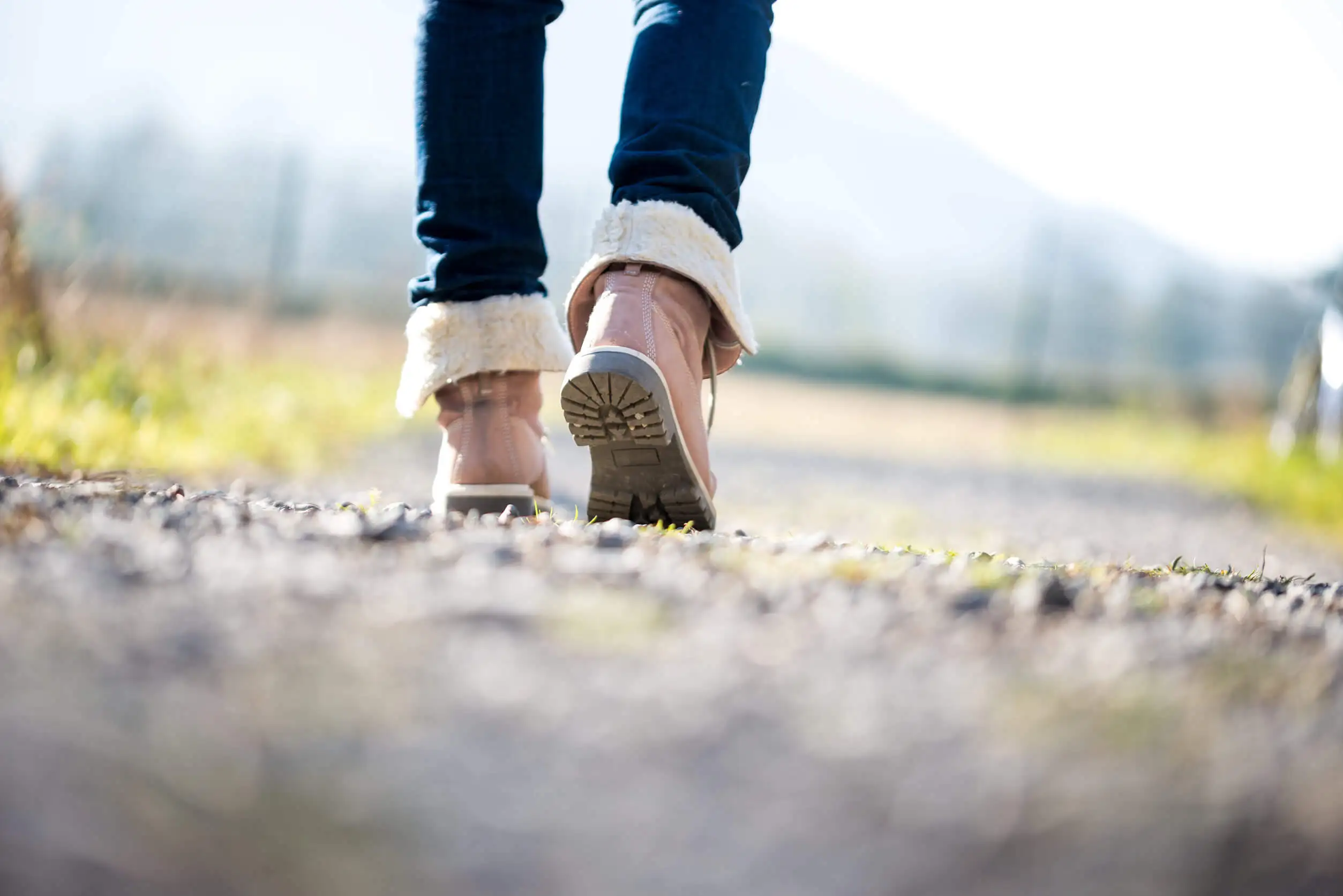10 U.N. Recommended Daily Practices to Reduce Climate Change

Based on the U.N. proposal to reduce climate change, it’s a good idea to reconsider certain household chores and consumption practices so that they don’t become a burden for the climate crisis and for our health. So, how does the environmental situation impact people? Furthermore, what are the chores and habits that should be changed? Find out in this article!
What is climate change and how does it affect us?
Firstly, the UN explains climate change as the changes in temperatures and weather patterns in the long term. Thus, according to the institution, since the 19th century, human intervention has been the predominant agent driving these changes due to the burning of fossil fuels.
Furthermore, these variations damage the environment, as evidenced, for example, by the lack of drinking water, natural disasters, and the decrease in food production, according to Manos Unidas.
Moreover, in terms of human welfare, the World Health Organization (WHO) links the effects of the climate emergency with deaths caused by extreme meteorological phenomena, including floods, heat waves, and storms.
In the same vein, the Pan American Health Organization warns of the indirect effects of allergens, respiratory and vector-borne diseases, water, and food, not to mention the socioeconomic consequences, such as food security, the vulnerability of groups, and forced displacement.
As an alternative to mitigate the damage, WHO endorses the suggestion of the Intergovernmental Panel on Climate Change, urging to limit the temperature increase to at least 1.5 °C, as its research suggests that this would be the ideal scale to prevent catastrophic health impacts.
Do you like this article? We think you may also like to read: 6 Advantages and Disadvantages of Electric Cars
If you apply the following daily habits, you can reduce climate change
The Emissions Gap Report 2022 emphasizes the urgency of bringing global warming below 4°F, to decrease the emission of greenhouse gases by 2030. Contributing to the mission is possible if you adopt the measures recommended by the UN that we’re going to talk about here.
1. Don’t waste energy
It’s likely that every day you do something with an environmental impact. Greenpeace mentions that making breakfast, teleworking, and training involves electricity, one of the inputs that deplete the planet’s resources.
Whenever you use less current, you favor energy efficiency. That is, electricity-saving methods at home have to do with replacing incandescent bulbs with LEDs, cutting back on heating and air conditioning hours, and/or purchasing energy-efficient appliances.
Remember that much of electricity runs on gas, coal, and oil – all things that are contributing to climate change.

2. Eat more vegetables
Plant-based foods mean less use of energy, land, and water, which in turn translates into lower greenhouse gas emissions. Therefore, you should consider a mixed diet, including legumes, fruits, and vegetables.
An experiment reported by National Geographic suggests that eating less red and processed meats, as well as doubling the intake of fruits and vegetables, benefits health and the environment.
To reach this conclusion, researchers changed the diet of a group of Americans, consisting of about 2,000 kilocalories per day. Thus, they determined that eating healthy reduces between 222 and 826 kilos of pollution per person and reduces between 20% and 40% the risk of myocardial infarction, type 2 diabetes, and colorectal cancer.
3. Wash with cold water
The Water Foundation argues that as long as you use a less hot temperature, you minimize gas emissions because you demand less electricity. Thus, washing dishes or clothes in cold water is a plus for the environment.
4. Air dry your clothing
Activating the clothes dryer is counterproductive to the climate problem, given the energy waste and that some of these machines run on methane, a highly potent gas. The non-profit organization Te Protejo insists that air-drying is appropriate, as it does not require electricity and extends the life of the garments.
5. Recycle to reduce climate change
Recycling is a method of climate protection. It happens that in all stages of the production chain, energy is wasted and increases pollution.
The Water Foundation highlights recycling as the recovery of reusable raw materials to manufacture new products, boost the circular economy, and reduce tons of garbage.
Buying second-hand is also a way to recycle and help the planet.
6. Don’t waste food
Compost leftover food. The World Wildlife Forum links food waste to the waste of water and energy that went into growing, harvesting, packaging, and transporting it. In the landfill, waste rots and emanates methane.
7. Select eco-friendly products
Have you noticed a blue star label on household appliances? This is the Energy Star seal, which means the product is qualified to both save money and protect the environment. On their official website, they indicate that there are 50 types of products, covering major appliances, lighting, office, and household items.
If you buy appliances belonging to the classification, you support the work of companies that use resources responsibly and do not strengthen the carbon footprint.
8. Switch to an electric car
A World Bank article highlights that in the United States, China, and Europe, electric vehicles are increasingly accepted as an alternative to mitigate climate change.
DiarioMotor compared CO2 emissions from electric and gasoline cars. Their analysis calculated that electric cars, during 195,000 kilometers, released 8,785 kilograms of carbon dioxide into the atmosphere.
Meanwhile, the latter, during the same trip, released 48,216 kilograms of CO2. The difference is significant.
9. When you can, move around on foot
The U.S. Environmental Protection Agency points out that burning fossil fuels for transportation purposes is one of the main human activities that emits CO2. For example, walking or cycling reduces pollution and has health benefits.
When distances are very long, taking the bus or train is the appropriate option. The idea is to travel by car as little as possible. If it’s appropriate to do so, try to share the vehicle to decongest the streets and reduce gas emissions from gasoline or diesel.

10. Adjust your thermostat
Regulating cooling and heating helps to reduce climate change; both services constitute the largest part of energy expenditure in the home.
The United Nations advises adjusting the thermostat to a lower temperature in winter and a higher one in summer. Thus, the environment wins, and your electricity bill will decrease.
We think you may also like to read this article: Humic Substances: Characteristics and Benefits for Plants
Promote these actions to reduce climate change
Finally, a valuable method to reduce climate change is to spread the message. Express the importance of adopting environmental habits in your everyday life and with those around you. By doing this, we can speed up the results if the entire population participates.
Finally, emissions reports emphasize that lifestyle changes at home and in communities serve as a catalyst for widespread transformation. So, now that you know the practices, will you make changes for the well-being of the planet?
All cited sources were thoroughly reviewed by our team to ensure their quality, reliability, currency, and validity. The bibliography of this article was considered reliable and of academic or scientific accuracy.
- Capstick, J., Khosla, R., & Wang, S. (2020). Cerrando la brecha: el papel de los programas equitativos de bajas emisiones de carbono. Estilos de vida. Informe de Emisión de Brechas. https://wedocs.unep.org/xmlui/bitstream/handle/20.500.11822/34432/EGR20ch6.pdf?sequence=3
- Encina, C. (2021). Cuida tu ropa al mismo tiempo que al planeta. ONG Te Protejo. Chile. https://ongteprotejo.org/tips/cuida-tu-ropa-al-mismo-tiempo-que-al-planeta/
- Gómez, J. (2020). Comparamos la huella de carbono de un coche de gasolina y uno eléctrico: ¿Cuál emite más CO2? ¿Cuál tiene un menor coste de uso? DiarioMotor. https://www.diariomotor.com/reportajes/huella-carbono-emite-co2-gasolina-electrico/
- Redacción Banco Mundial. (2022). Vehículos eléctricos: beneficios económicos y ambientales para los países en desarrollo. Banco Mundial. https://www.bancomundial.org/es/news/feature/2022/11/17/electric-vehicles-an-economic-and-environmental-win-for-developing-countries#:~:text=Los%20veh%C3%ADculos%20el%C3%A9ctricos%20de%20pasajeros%2C%20inventados%20hace%20m%C3%A1s%20de%20un,China%2C%20Estados%20Unidos%20y%20Europa.
- Redacción Energy Star. https://www.energystar.gov/recursos_en_espanol
- Redacción EPA. (2022). Emisiones de dióxido de carbono. Agencia de Protección Ambiental. Estados Unidos. https://espanol.epa.gov/la-energia-y-el-medioambiente/emisiones-de-dioxido-de-carbono
- Redacción Fondo Mundial para la Naturaleza. Lucha contra el cambio climático evitando el desperdicio de alimentos. Fondo Mundial para la Naturaleza. https://www.worldwildlife.org/descubre-wwf/historias/lucha-contra-el-cambio-climatico-evitando-el-desperdicio-de-alimentos#:~:text=Cuando%20desperdiciamos%20alimentos%2C%20tambi%C3%A9n%20desperdiciamos,que%20el%20di%C3%B3xido%20de%20carbono.
- Redacción Fundación del Agua. Ahorrar agua para luchar contra el cambio climático. Fundación del Agua. España. https://www.fundacionaquae.org/ahorrar-agua-para-luchar-contra-el-cambio-climatico/
- Redacción Fundación del Agua. (2021). Tres R: la estrategia contra el cambio climático. Fundación del Agua. https://www.fundacionaquae.org/wiki/recicla-hoy-y-todos-los-dias-del-ano/
- Redacción Manos Unidas. ¿Qué es el cambio climático? Organización No Gubernamental Manos Unidas. https://www.manosunidas.org/observatorio/cambio-climatico/que-es-cambio-climatico
- Redacción National Geographic. (2021). La alimentación afecta el cambio climático. National Geographic. https://www.nationalgeographic.com.es/ciencia/actualidad/asi-afecta-alimentacion-cambio-climatico_11271
- Redacción OMS. Cambio climático y salud. (2021). Organización Mundial de la Salud. https://www.who.int/es/news-room/fact-sheets/detail/climate-change-and-health#:~:text=El%20cambio%20clim%C3%A1tico%20ya%20est%C3%A1,las%20zoonosis%20y%20las%20enfermedades
- Redacción ONU. ¿Qué es el cambio climático? Organización de las Naciones Unidas. https://www.un.org/es/climatechange/what-is-climate-change
- Redacción ONU. Su guía de acción contra el cambio climático: la energía en su hogar. Organización de las Naciones Unidas. https://www.un.org/es/actnow/home-energy#:~:text=Ahorre%20energ%C3%ADa%20siempre%20que%20sea%20posible&text=Podemos%20consumir%20menos%20energ%C3%ADa%20si,lugar%20de%20usar%20la%20secadora.
- PNUMA. (2022). Informe sobre la Brecha de Emisiones. Programa de las Naciones Unidas para el Medio Ambiente. https://www.unep.org/es/resources/informe-sobre-la-brecha-de-emisiones-2022#:~:text=los%20objetivos%20del-,Acuerdo%20de%20Par%C3%ADs,-.%20Esta%20disparidad%20entre
- Redacción OPS. Cambio climático y salud. Organización Panamericana de la Salud. https://www.paho.org/es/temas/cambio-climatico-salud
- Soto, J. (2020). ¿Cómo puedo ahorrar energía y ayudar al medio ambiente? Greenpeace México. https://www.greenpeace.org/mexico/blog/8736/como-puedo-ahorrar-energia-y-ayudar-al-medio-ambiente/
This text is provided for informational purposes only and does not replace consultation with a professional. If in doubt, consult your specialist.








